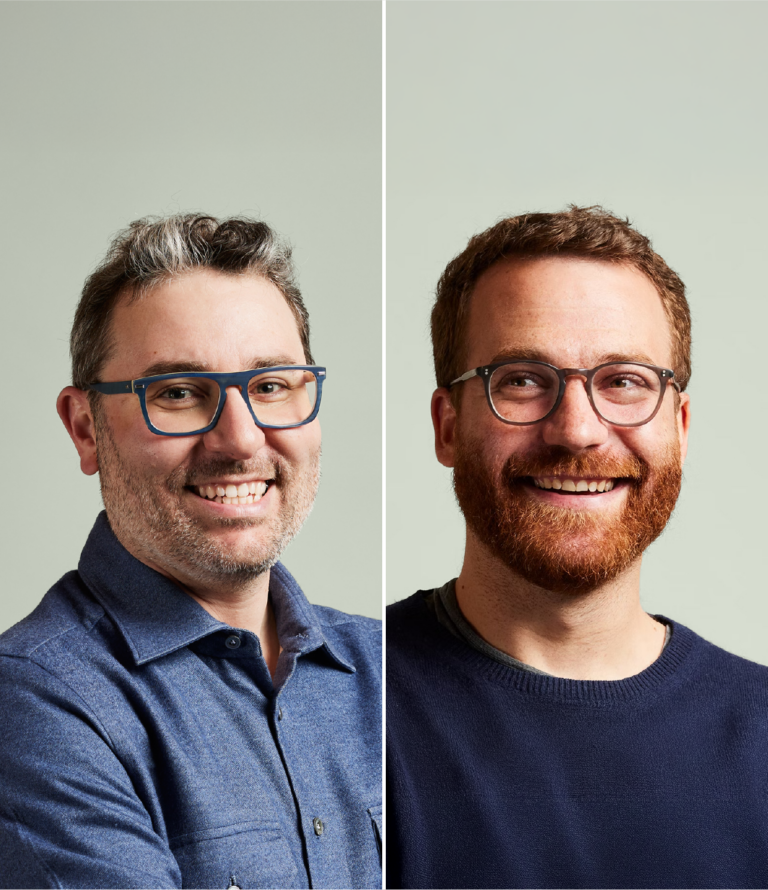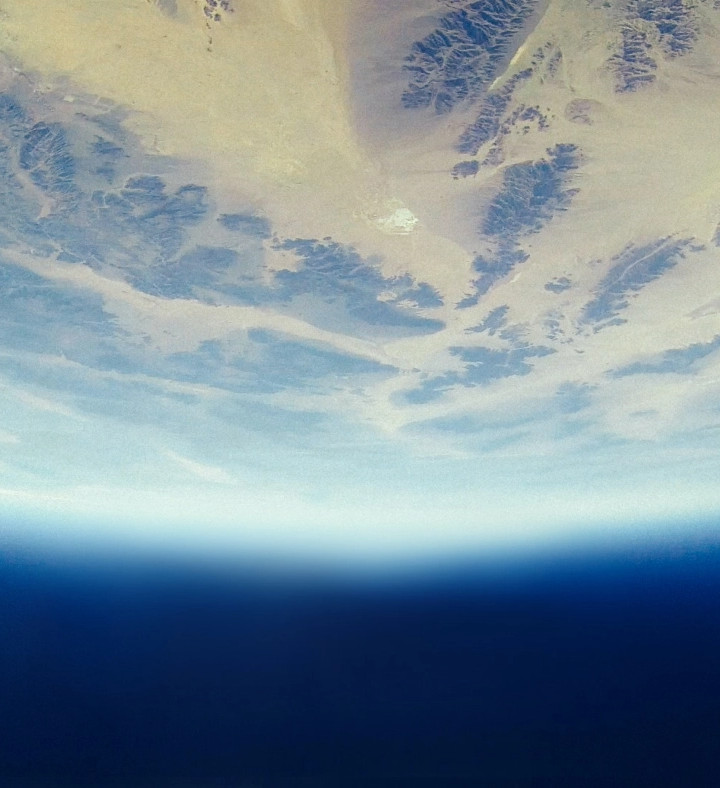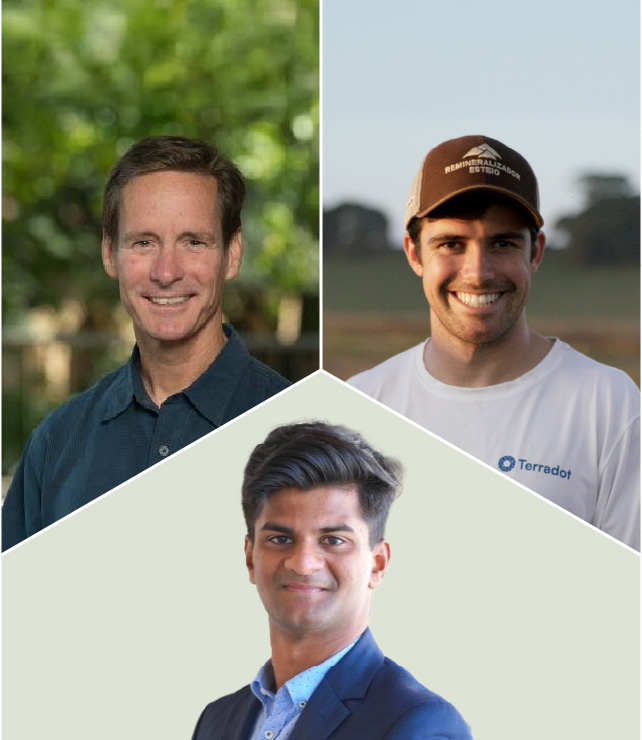
Profiles
Terradot: Enabling Nation-Scaled Carbon Removal
Terradot is developing large-scale Enhanced Rock Weathering (ERW) to remove billions of tonnes of CO₂ from the atmosphere. Founded by James Kanoff, Sasankh Munukutla, and Scott Fendorf, they're gathering ground truth data and building tools to deploy ERW tomorrow by proving the science today.
Jun 27
A Natural Process, Engineered
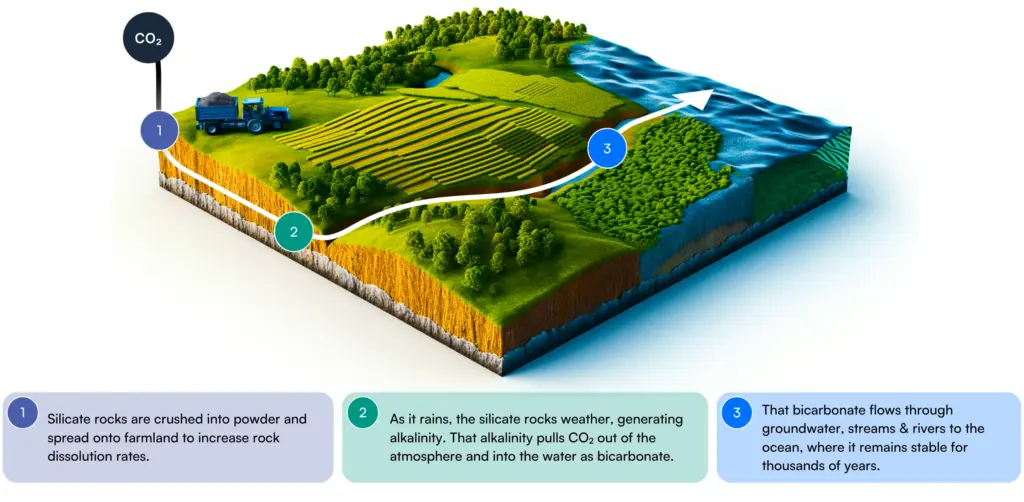
Rock weathering is one of Earth’s most reliable carbon removal processes. When rain meets silicate rocks, it creates alkalinity that pulls CO₂ from the air, moves it through the soil, and locks it away as minerals in the oceans. The formation of the Himalayas shows how powerful this process can be. As tectonic forces pushed up the mountain range, newly exposed silicate rocks began weathering, reducing atmospheric carbon levels over millions of years.
Enhanced Rock Weathering (ERW) speeds up this natural process, shortening it from millions of years to timelines that matter for the climate crisis. The approach is simple. Crush silicate rocks. Spread them on farmland. Then rainwater triggers chemical reactions that lock carbon away in minerals for hundreds of thousands of years. Another advantage is that ERW fits right into existing mining and agricultural infrastructure. “We looked at systems already running at gigaton scale,” explains Terradot CEO and cofounder James Kanoff. “Mining and agriculture already give us everything we need. There are quarries near farmland, crushers, spreaders, and haulers ready to go.”
From Food Rescue to Carbon Removal
James’ path to ERW began during the pandemic with a lesson in scale. His nonprofit, FarmLink Project, tapped into existing agricultural supply chains to rescue and redirect millions of pounds of food. Back at Stanford, his search for scalable climate solutions led him to Enhanced Rock Weathering, where he once again saw the potential of agriculture for impact.
James teamed up with Stanford’s renowned Earth System Sciences professor, Scott Fendorf whose decades of soil chemistry and modeling research laid the scientific foundation for Terradot, in addition to computer scientist Sasankh Munukutla, who brought AI and remote sensing expertise from his work tracking global methane emissions.
With a TomKat Center Innovation Transfer Grant, they assembled a Scientific Advisory Board and launched their first pilot on 250 hectares of farmland. Their goal was to connect soil science to scalable tools and turn ERW from a geological curiosity into a viable, global climate solution.
Gathering Data, Building Infrastructure
Terradot aims to build the scientific and technological foundation to enable global ERW implementation. At the core is their high-integrity measurement, reporting, and verification (MRV) process powered by MIN3P Reactive Transport Models, which will predict weathering and quantify removal rates across varied conditions.
“While there are models today that predict what we think should happen,” James explains, “there needs to be more evidence. That’s why we’re focused on ground truth measuring how much carbon’s actually captured.” Their approach empirically measures carbon removal using multi-phase, multi-period samples across soil, water, gas, and plants.
Their biggest challenge is gathering the data to make predictive modeling and measurement work. “It seems a little too good to be true,” James admits. “You’re saying we’ve got billions of tons of this rock, millions of hectares of farmland, and we don’t have to build much new infrastructure. What’s the catch?” The catch is that collecting the data needed to power these models is tough.
The team goes to extraordinary lengths to understand ERW’s mechanics at their research site in Brazil. They paddle rivers with sensors, face dengue outbreaks and snakes, and collect thousands of soil samples from just one field.
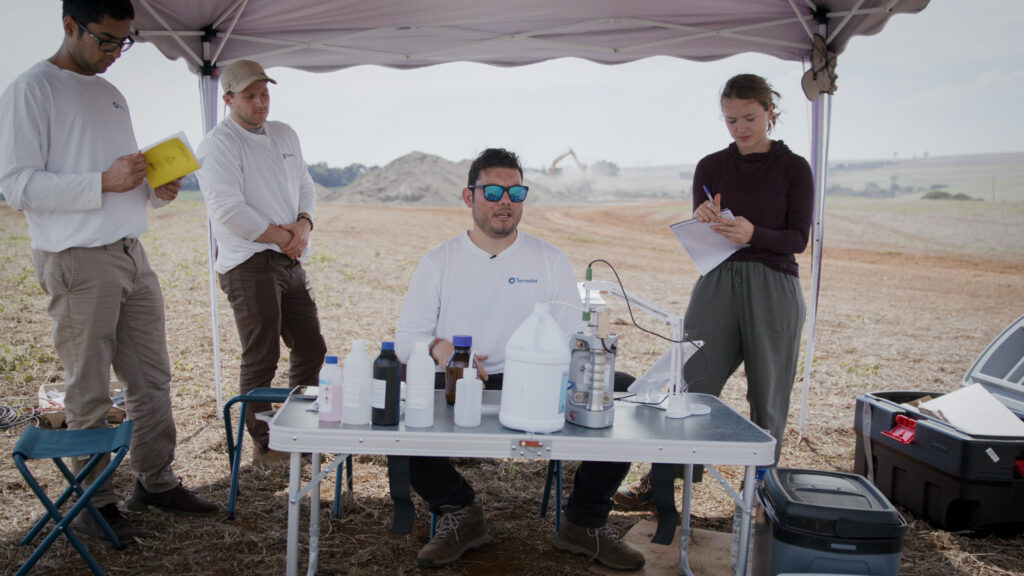
James acknowledges the contradiction between this high-intensity work and the company’s global-scale ambitions. “In our last field, we pulled almost 10 tons of soil core samples. You might be thinking, ‘How’s that going to scale?’ It won’t. It’s the first step. As we get to an increasingly larger area, the signal gets stronger, the amount of measurements needed gets smaller, and ultimately, we’ll use that data to calibrate models to make inferences on the fields we’re not directly measuring.”
Enabling Nation-Scaled Carbon Removal
Research shows Enhanced Rock Weathering on cropland alone could remove 2–4 gigatonnes of CO₂ a year, which is the same as emissions from every passenger vehicle worldwide. Terradot’s approach to achieving this scale starts with measurement and validation. They’ve partnered with The Brazilian Agricultural Research Corporation (EMBRAPA)—the country’s leading agricultural research institution—to create a pilot framework for nation-scaled ERW.
Brazil is the ideal testing ground with its tropical climate, accelerating weathering rates, strong agricultural sector, and clean electricity grid. Terradot has already spread 48,000 tons of rock across 1,800 hectares in their first year.
“It’s not going to be a startup that scales these logistics,” James explains. “We want our science and measurement tools to enable governments. Suppose a country like India used enhanced rock weathering. In that case, we’d be talking about the removal of hundreds of millions of tons of carbon.”
With a coalition of experts from Stanford, Berkeley, and the University of British Columbia, alongside partnerships with Google and Frontier, Terradot has secured agreements to remove nearly 300,000 tonnes of CO₂, the largest commitment in ERW’s history. The ultimate vision is that hundreds of sites worldwide act as carbon removal hubs powered by rigorous measurement tools and scientific frameworks. They’re unlocking a global solution for tomorrow by doing the hardest data-gathering work today.
Discover how science, passion, and bold thinking drive Terradot’s mission to fight climate change on a planetary scale.

